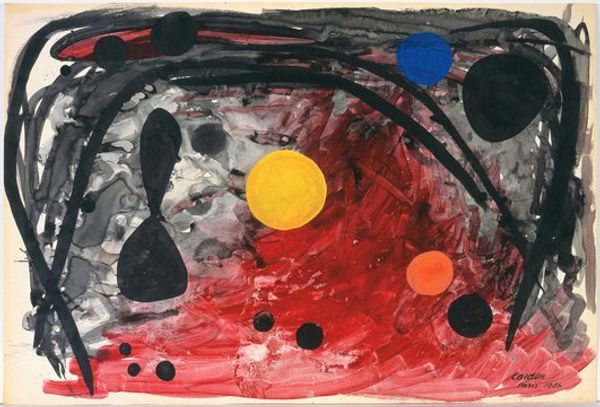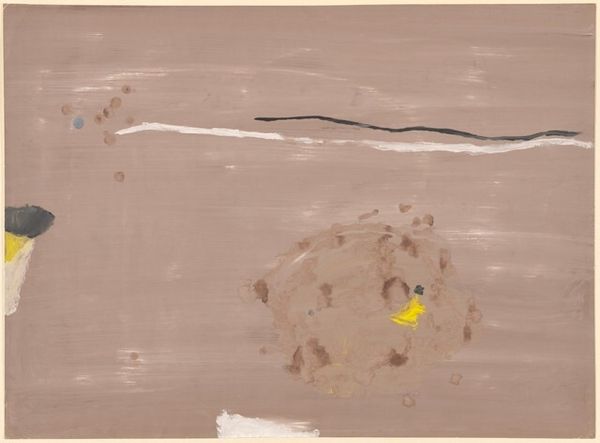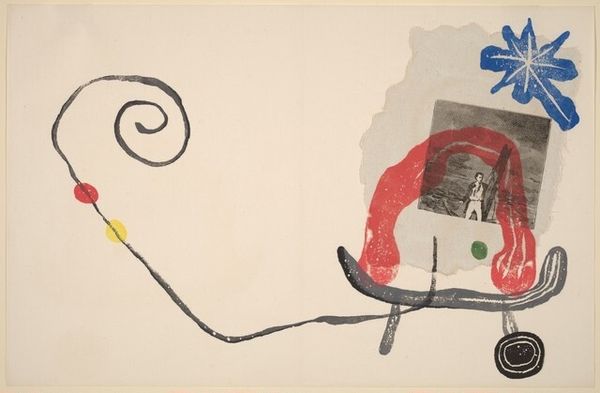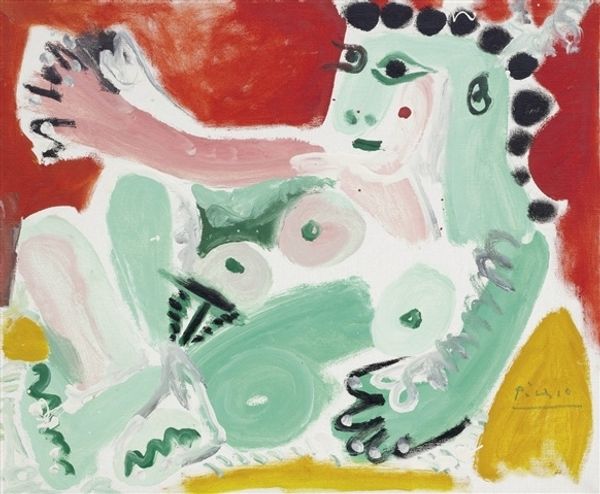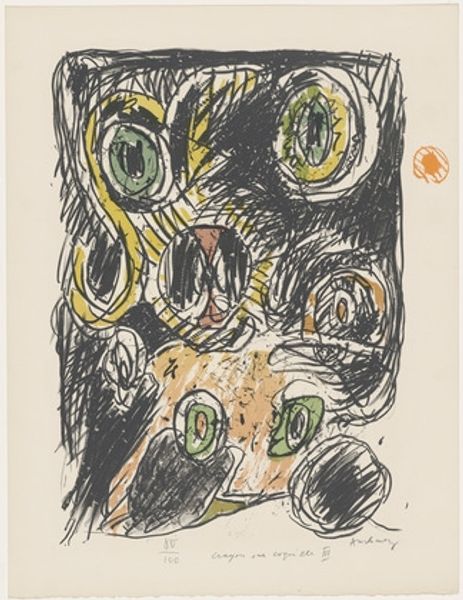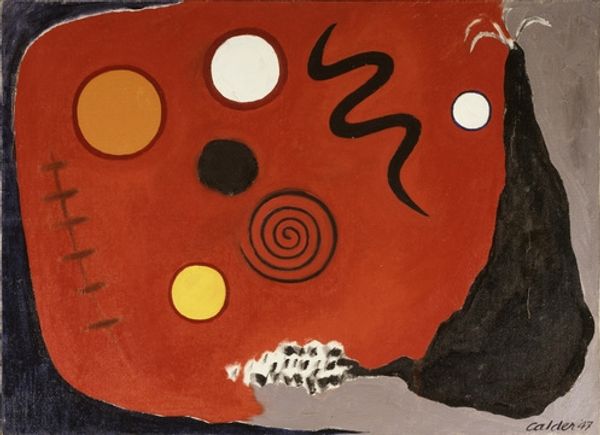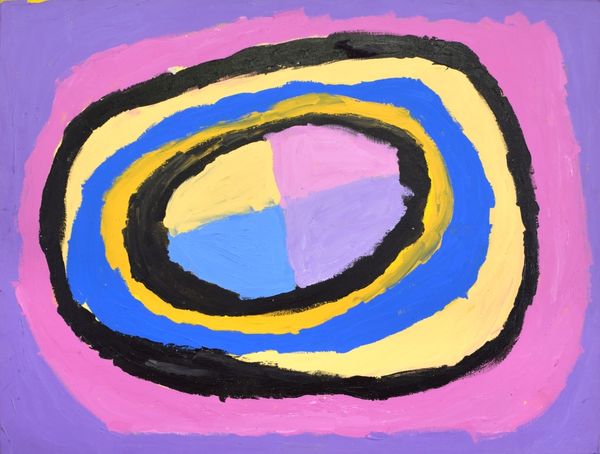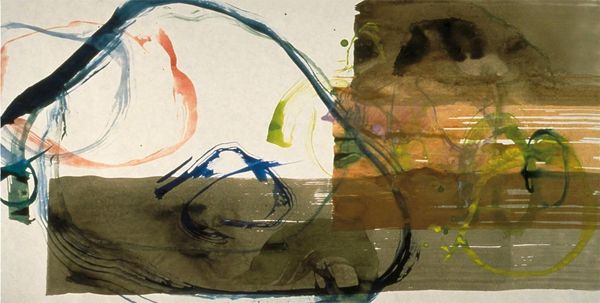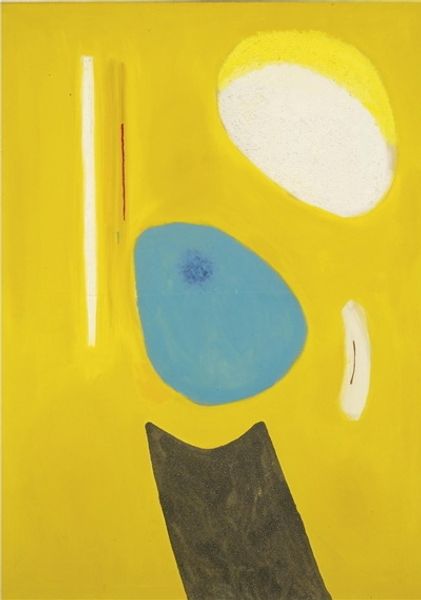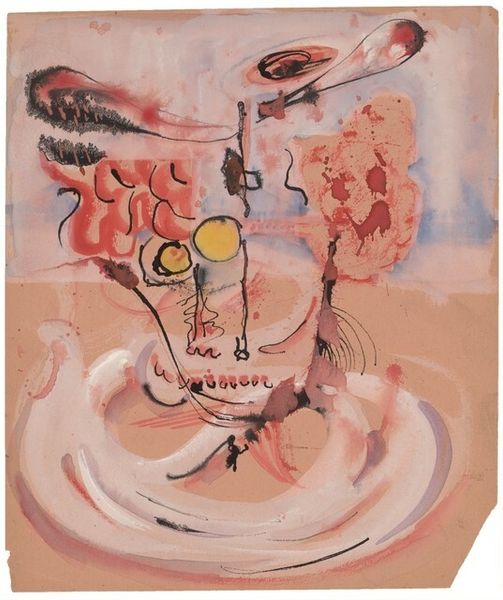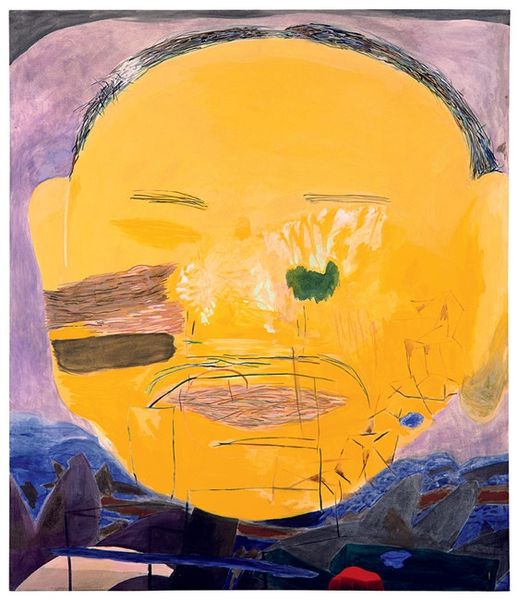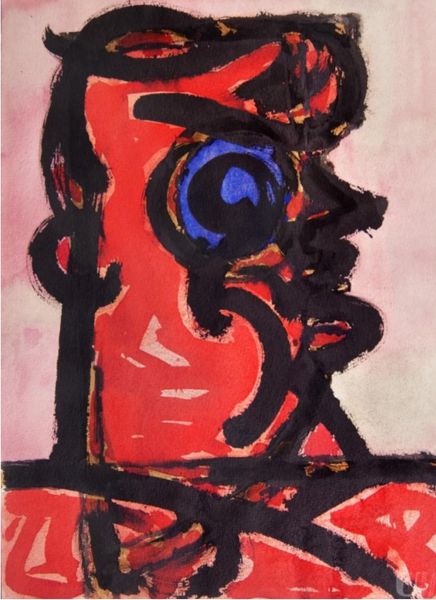
painting, paper, watercolor
#
abstract-expressionism
#
painting
#
paper
#
watercolor
#
geometric-abstraction
#
abstraction
#
line
#
modernism
#
watercolor
Copyright: Alexander Calder,Fair Use
Curator: This abstract watercolor by Alexander Calder, simply titled "Untitled," dates back to 1946. What's your first impression? Editor: It strikes me as rather playful, even mischievous. The bold use of primary colors against the raw paper creates a sense of immediacy. Are those celestial bodies perhaps, or more grounded materials and earthly entities? Curator: I find that situating it in the post-war context, particularly in relation to the burgeoning Abstract Expressionist movement, really allows it to speak. Calder, though already established, was engaging with anxieties and a search for new modes of expression resonant with global changes. The stark contrasts speak to the tensions of the time. Editor: Absolutely. And let's consider his methods. Watercolor on paper isn't just about quick application; it is an indicator of provisional creation. Calder seems to be toying with gravity, even chaos, the sinuous forms counterpointing the rigid circles and linear boundaries of the design and manufacture that formed the basis for modernity. Curator: It's crucial to acknowledge Calder’s broader oeuvre; understanding his sculptures, his kinetic mobiles, provides another access point into understanding this piece. The sense of implied motion and spatial relationships present here—the dynamic interplay of lines and forms—echo the principles at play within his three-dimensional work. How does his relationship to the medium speak to broader social constructs of art versus craft in a still-industrializing postwar climate? Editor: Good point, if we examine materiality, we see that it challenges the then pervasive ideology that celebrated machine-produced homogeneity and that looked with disdain at artistic works tied to labor and handicraft. It subtly validates alternate forms of aesthetic value beyond industrialized methods, while being itself somewhat repetitive or mechanistic in technique. Curator: I think looking at Calder through this intersectional lens reveals much more depth, opening up a dialogue that examines his work within complex structures that underpin mid-century art history. We could see it, with a perspective gained from feminist theories, as also a claim to gender fluidity, though perhaps subtly and intuitively rather than manifestly. Editor: I find I’m walking away appreciating the artwork for both its materiality and its means of evading and transforming our collective social experience with materials and color in space. It offers an example of how creative processes transform production. Curator: Ultimately, Calder's work compels us to consider abstraction as not merely form or color, but as a response to, and reflection of, wider human struggles and questions surrounding social norms.
Comments
No comments
Be the first to comment and join the conversation on the ultimate creative platform.
